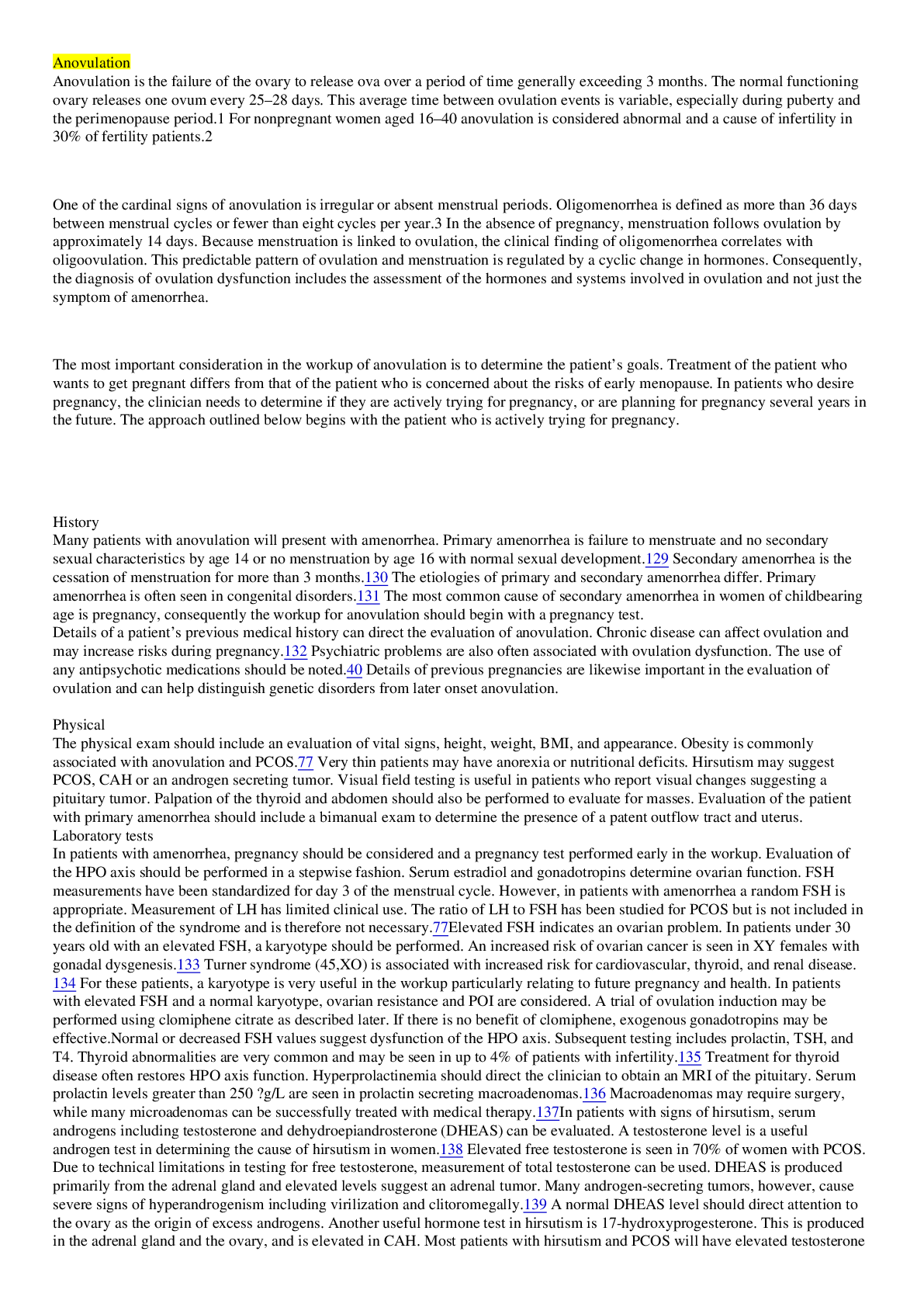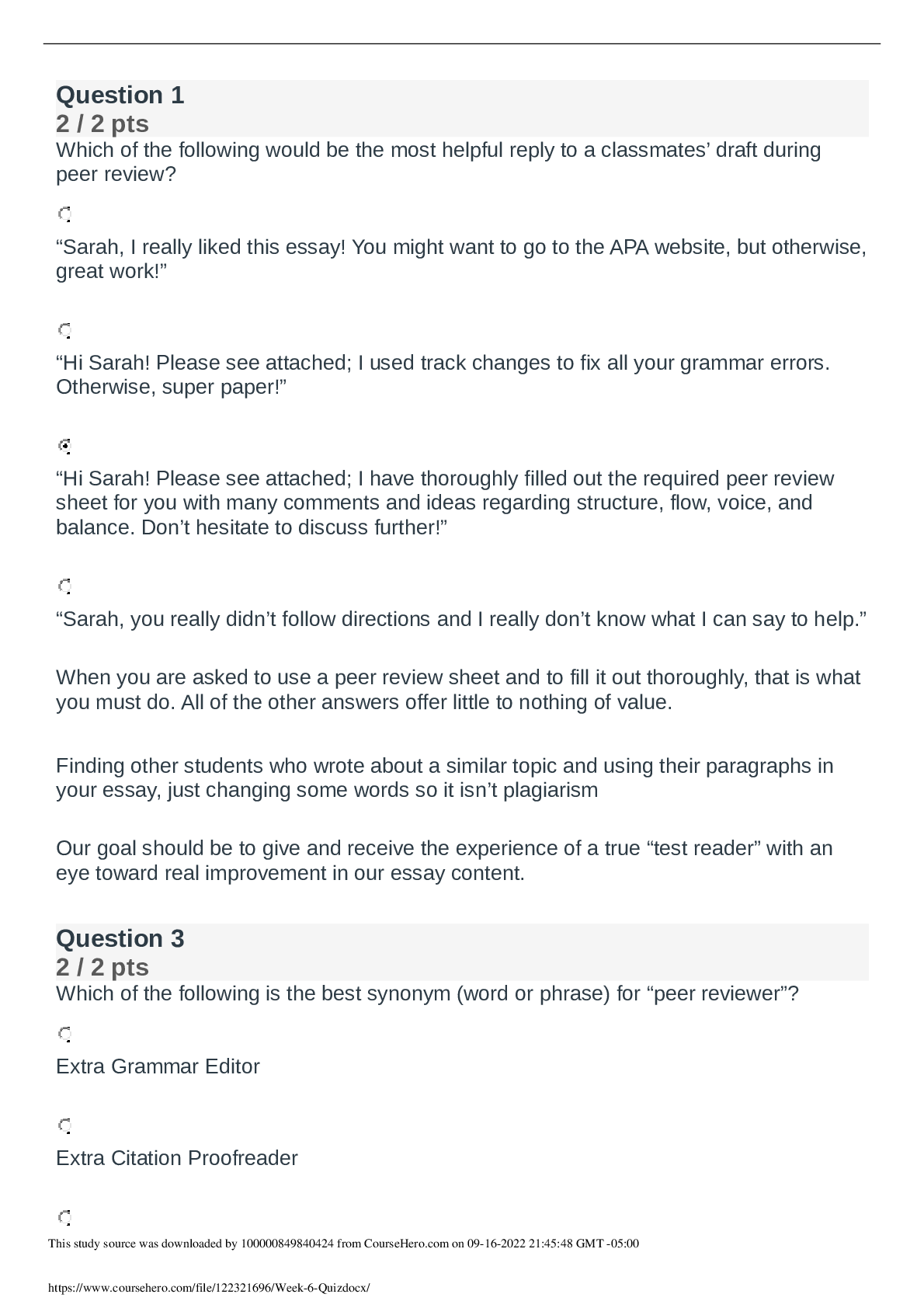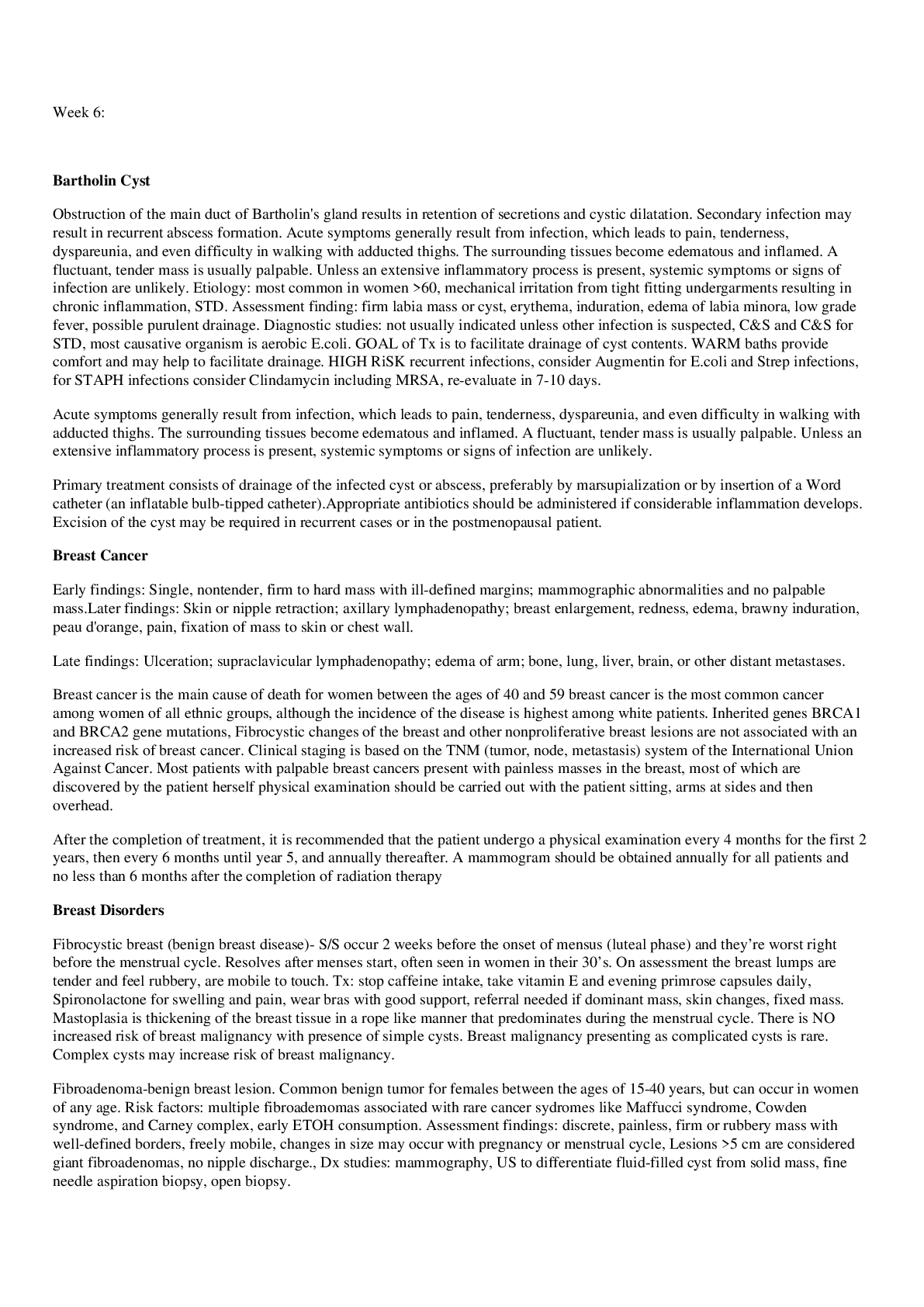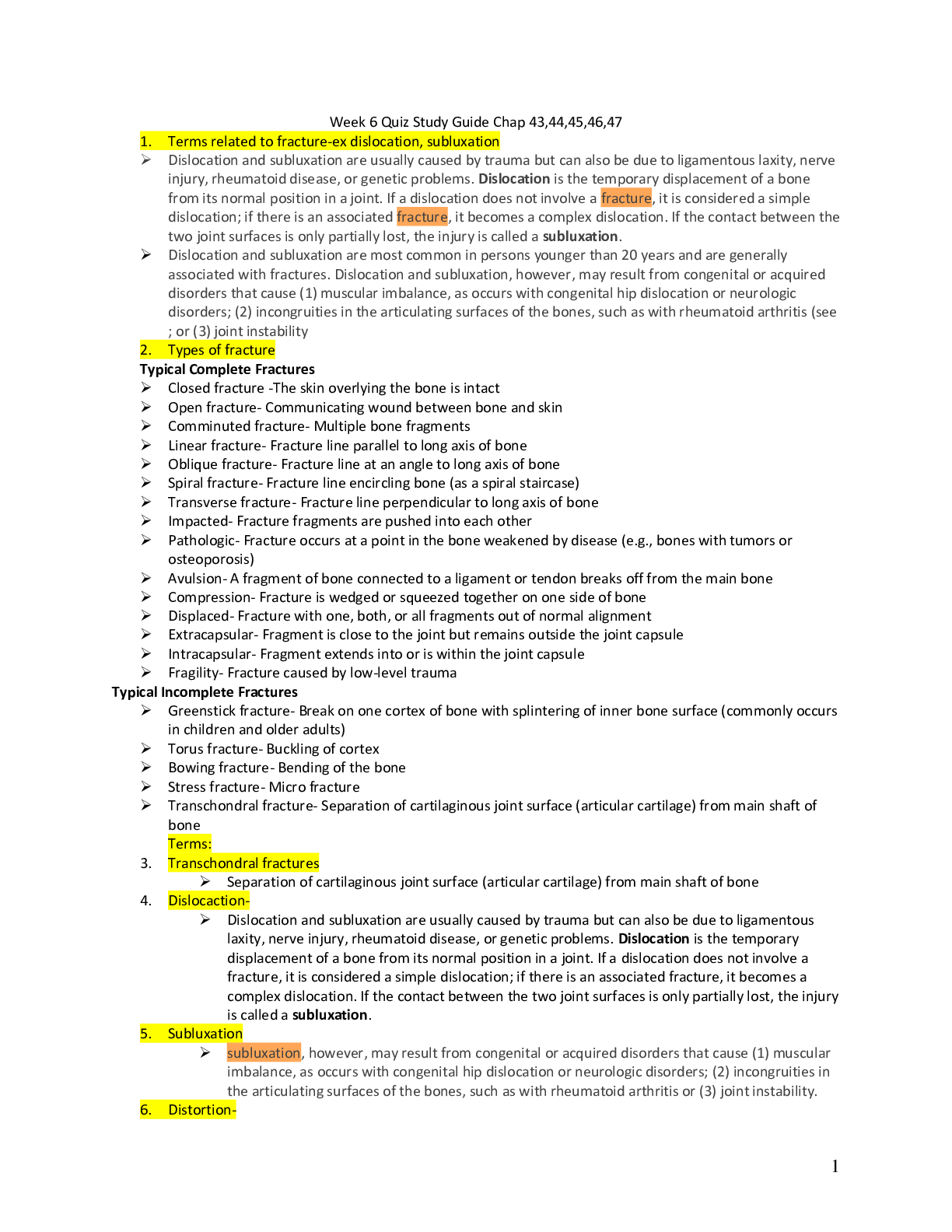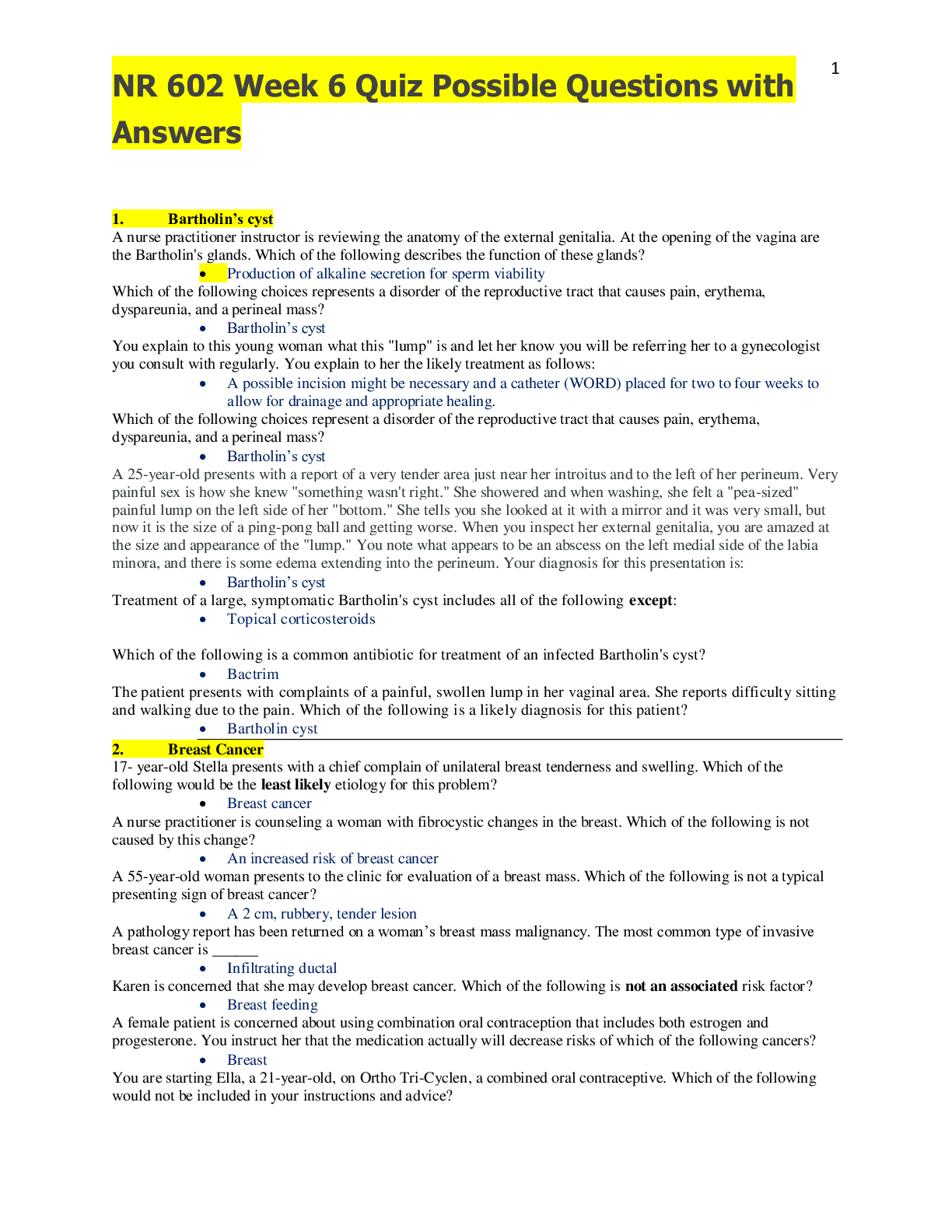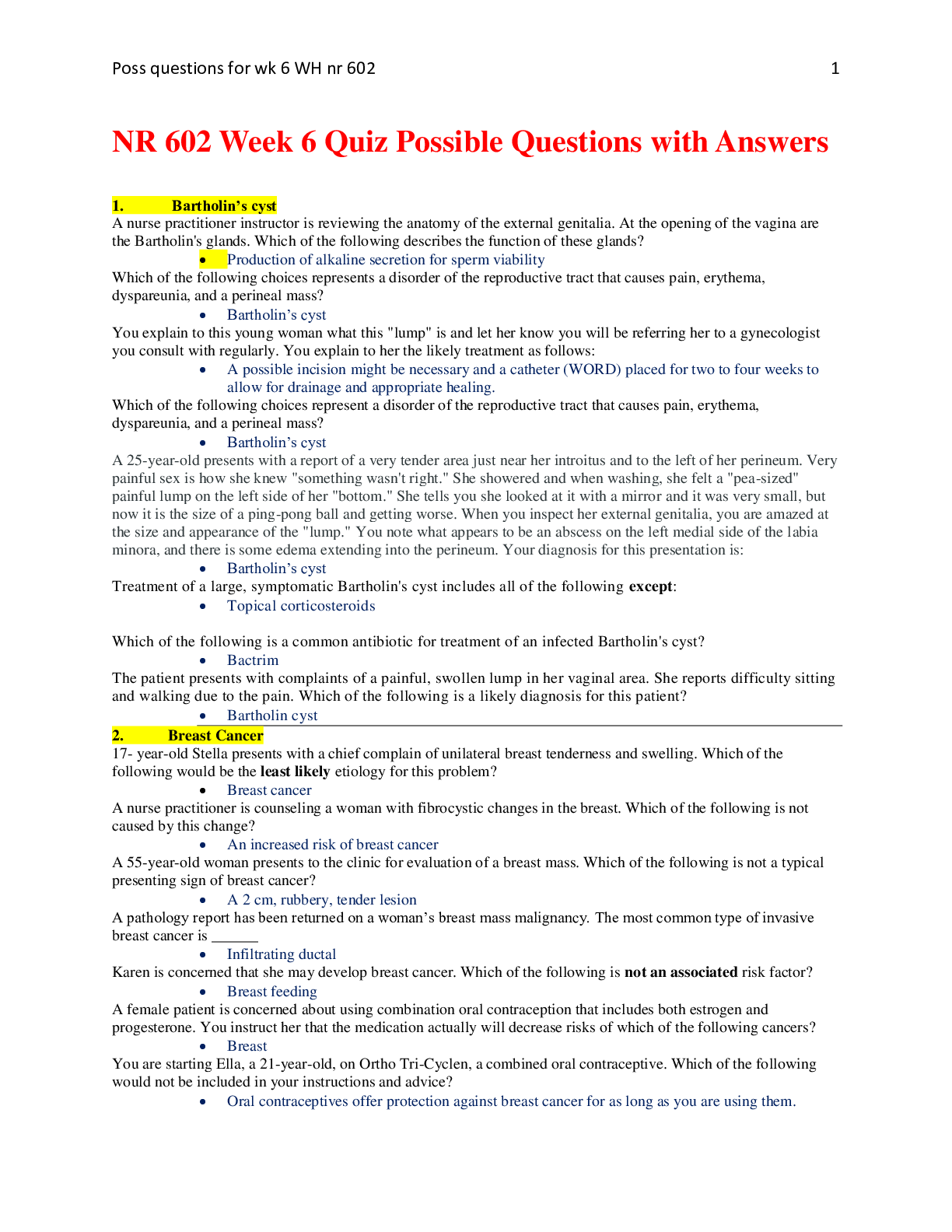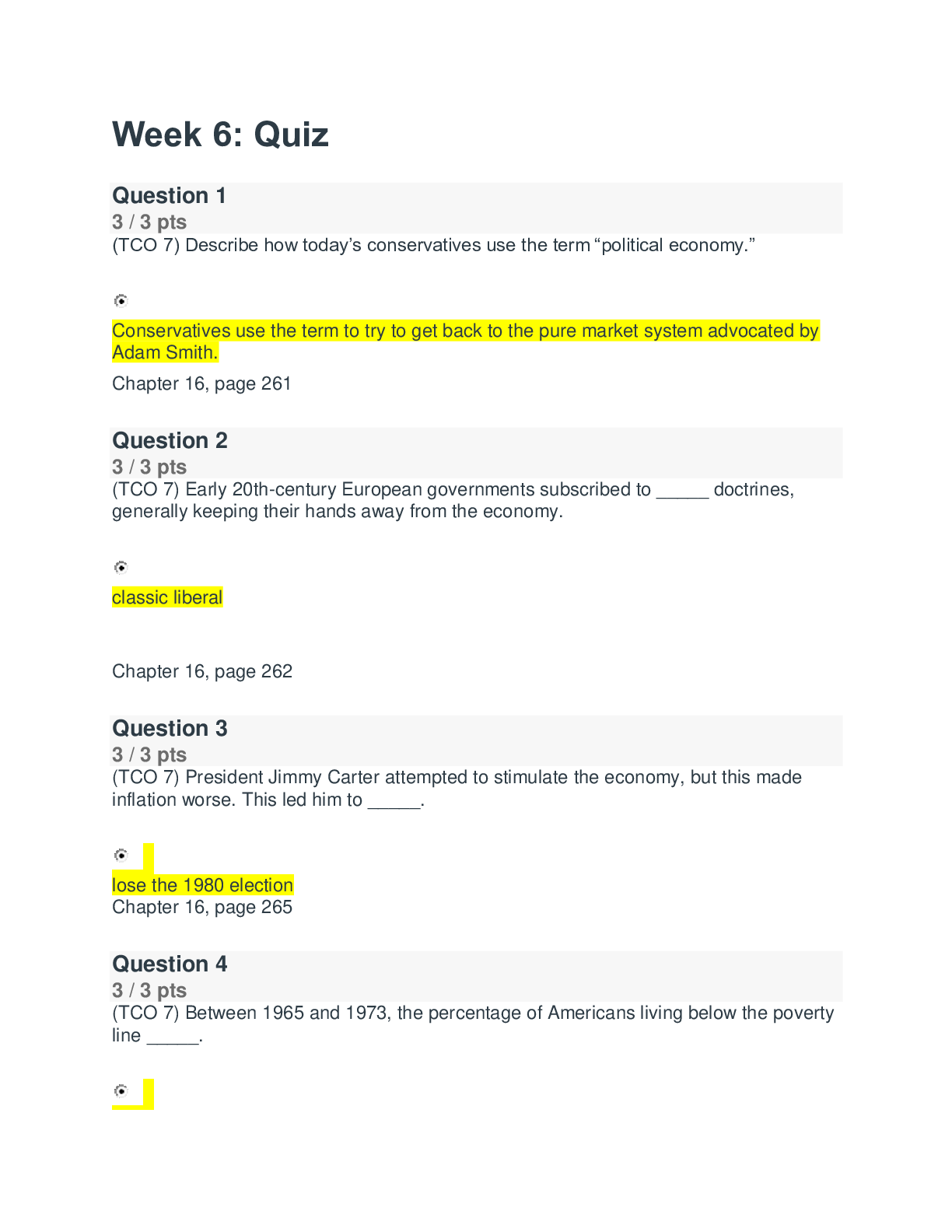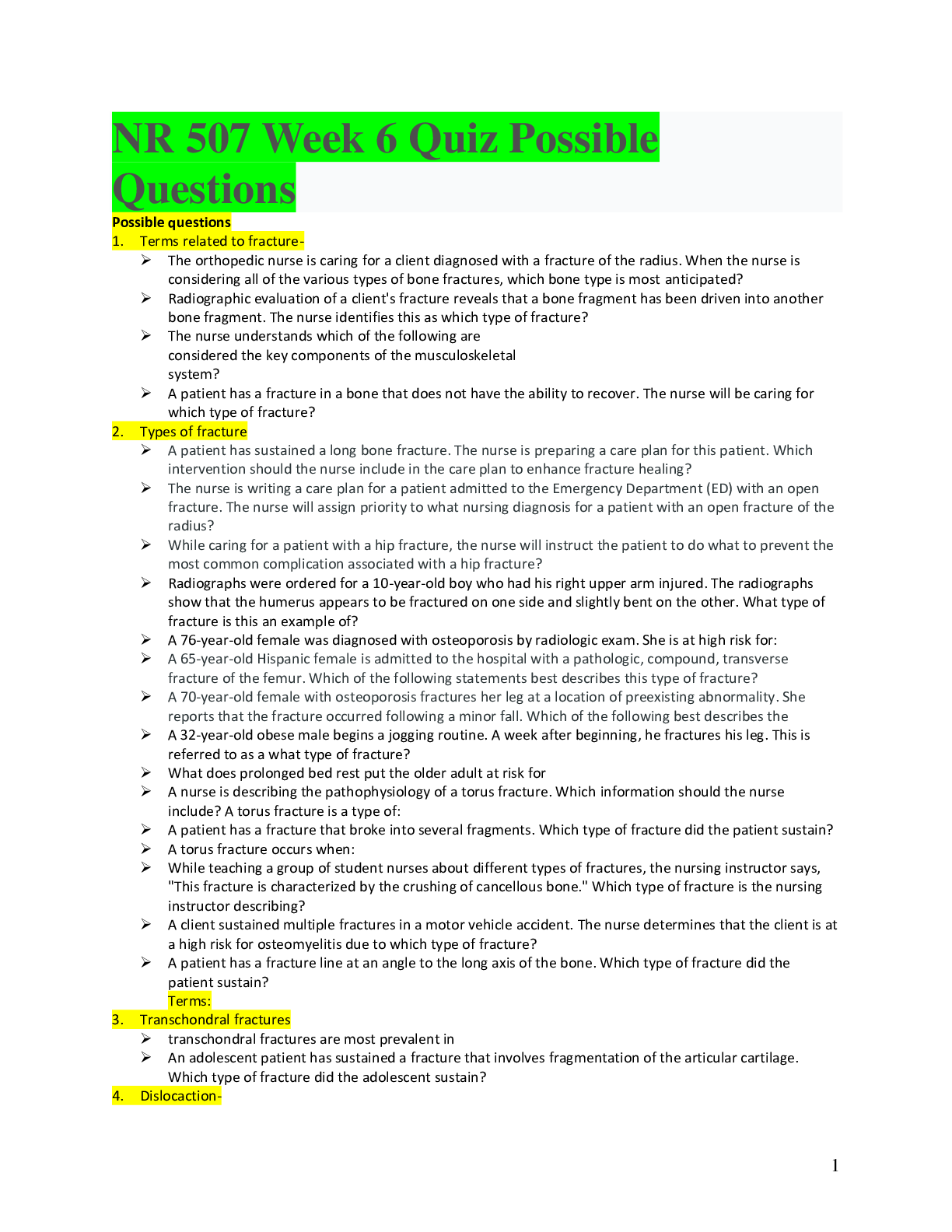*NURSING > STUDY GUIDE > NR 601 Week 6 Quiz Review (All)
NR 601 Week 6 Quiz Review
Document Content and Description Below
NR 601 Week 6 Quiz Review Week 5 Diabetes · ADA screening recommendations: when to screen to repeat screens based on findings Recommendations Screening for type 2 diabetes with an informal a... ssessment of risk factors or validated tools should be considered in asymptomatic adults. B Testing for type 2 diabetes in asymptomatic people should be considered in adults of any age who are over- weight or obese (BMI >25 kg/m2 or $23 kg/m2 in Asian Americans) and who have one or more additional risk factors for diabetes. B For all people, testing should be- gin at age 45 years. B If tests are normal, repeat testing carried out at a minimum of 3-year intervals is reasonable. C To test for type 2 diabetes, fasting plasma glucose, 2-h plasma glucose after 75-g oral glucose tolerance test, and A1C are equally appropriate. B In patients with diabetes, identify and treat other cardiovascular disease risk factors. Updated recommendations emphasize that testing for prediabetes and type 2 diabetes should be considered in children and adolescents younger than 18 years of age who are overweight or obese (BMI >85th percentile for age and sex, weight for height >85th percentile, or weight >120% of ideal for height), and have one or more additional risk factors for diabetes such as (1) maternal history of diabetes or gestational diabetes during the child’s gestation; (2) family history of type 2 diabetes in first- or seconddegree relative; (3) race/ethnicity (Native American, African American, Latino, Asian American, Pacific Islander; and/or (4) signs of insulin resistance or conditions associated with insulin resistance (acanthosis nigricans, hypertension, dyslipidemia, polycystic ovary syndrome, or small- DIAGNOSTIC TESTS FOR DIABETES Diabetes may be diagnosed based on plasma glucose criteria, either the fasting plasma glucose (FPG) or the 2-h plasma glucose (2-h PG) value after a 75-g oral glucose tolerance test (OGTT) or A1C criteria (1,6) (Table 2.2). FPG, 2-h PG after 75-g OGTT, and A1C are equally appropriate for diagnostic testing. It should be noted that the tests do not necessarily detect diabetes in the same individuals. The efficacy of interventions for primary prevention of type 2 diabetes (7,8) has primarily been demonstrated among individuals with impaired glucose tolerance (IGT), not for individuals with isolated impaired fasting glucose (IFG) or for those with prediabetes defined by A1C criteria. The same tests may be used to screen for and diagnose diabetes and to detect individuals with prediabetes. Diabetes may be identified anywhere along the spectrum of clinical scenarios: in seemingly low-risk individuals who happen to have glucose testing, in individuals tested based on diabetes risk assessment, and in symptomatic patients. Fasting and 2-Hour Plasma Glucose The FPG and 2-h PG may be used to diagnose diabetes (Table 2.2). The concordance between the FPG and 2-h PG tests is imperfect, as is the concordance be- tween A1C and either glucose-based test. Numerous studies have confirmed that, compared with FPG and A1C cut points, the 2-h PG value diagnoses more people with diabetes. A1C The A1C test should be performed using a method that is certified by the NGSP (www.ngsp.org) and standardized or traceable to the Diabetes Control and Complications Trial (DCCT) reference as- say. Although point-of-care A1C assays may be NGSP certified, proficiency testing is not mandated for performing the test, so use of point-of-care assays for diagnostic purposes is not recommended but may be considered in the future if proficiency testing is performed and documented. The A1C has several advantages com- pared with the FPG and OGTT, including greater convenience (fasting not required), greater preanalytical stability, and less day-to-day perturbations during stress and illness. However, these advantages may be offset by the lower sensitivity of A1C at the designated cut point, greater cost, limited availability of A1C testing in certain regions of the developing world, and the imperfect correlation between A1C and average glucose in certain individuals. National Health and Nutrition Examination Survey (NHANES) data indicate that an A1C cut point of $6.5% (48 mmol/mol) identifies one-third fewer cases of undiagnosed diabetes than a fasting glucose cut point of $126 mg/dL (7.0 mmol/L) (9). When using A1C to diagnose diabetes, it is important to recognize that A1C is an indirect measure of average blood glucose levels and to take other factors into consideration that may impact hemoglobin glycation independently of glycemia including age, race/ethnicity, and anemia/ hemoglobinopathies. Confirming the Diagnosis Unless there is a clear clinical diagnosis (e.g., patient in a hyperglycemic crisis or with classic symptoms of hyperglycemia and a random plasma glucose $200 mg/dL [11.1 mmol/L]), a second test is required for confirmation. It is recommended that the same test be repeated without delay using a new blood sample for confirmation because there will be a greater likelihood of concurrence. For ex- ample, if the A1C is 7.0% (53 mmol/mol) and a repeat result is 6.8% (51 mmol/mol), the diagnosis of diabetes is confirmed. If two different tests (such as A1C and FPG) are both above the diagnostic threshold, this also confirms the diagnosis. On the other hand, if a patient has discordant results from two different tests, then the test result that is above the diagnostic cut point should be repeated. The diagnosis is made on the basis of the confirmed test. For example, if a patient meets the diabetes criterion of the A1C (two results $6.5% [48 mmol/mol]) but not FPG (,126 mg/dL [7.0 mmol/L]), that person should nevertheless be considered to have diabetes. Since all the tests have preanalytic and analytic variability, it is possible that an abnormal result (i.e., above the diagnostic threshold), when repeated, will produce a value below the diagnostic cut point. This scenario is likely for FPG and 2-h PG if the glucose samples remain at room temperature and are not centrifuged promptly. Because of the potential for preanalytic variability, it is critical that samples for plasma glucose be spun and separated immediately after they are drawn. If patients have test results near the margins of the diagnostic threshold, the health care professional should follow the patient closely and repeat the test in 3–6 months. [Show More]
Last updated: 1 year ago
Preview 1 out of 22 pages
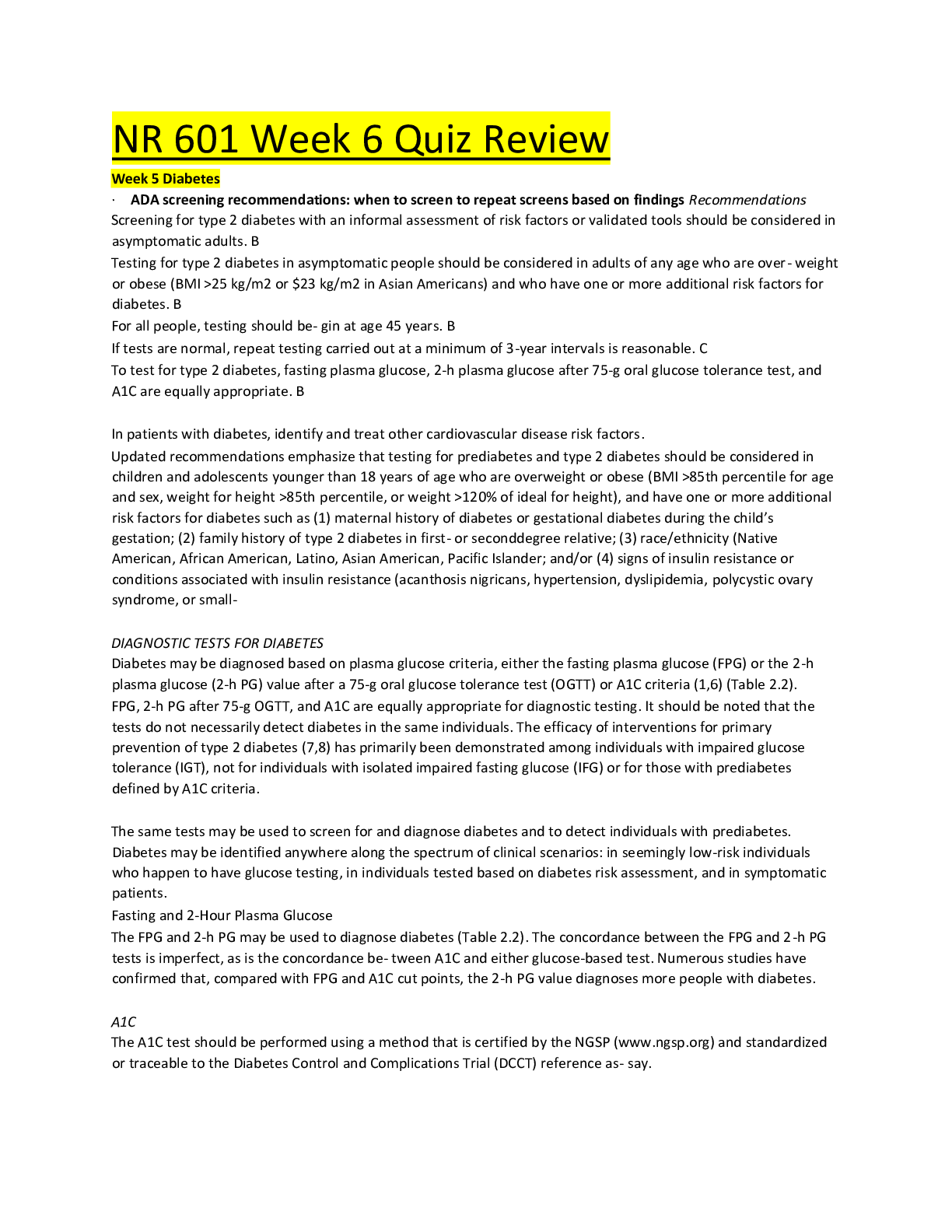
Also available in bundle (1)

NR 601 STUDY PACKAGE (Discussions, Assignments, Quizzes, Midterm and Final Exams)
NR 601 STUDY PACKAGE (Discussions, Assignments, Quizzes, Midterm and Final Exams)
By PROF 3 years ago
$150.5
48
Reviews( 0 )
Document information
Connected school, study & course
About the document
Uploaded On
Apr 05, 2021
Number of pages
22
Written in
Additional information
This document has been written for:
Uploaded
Apr 05, 2021
Downloads
0
Views
57

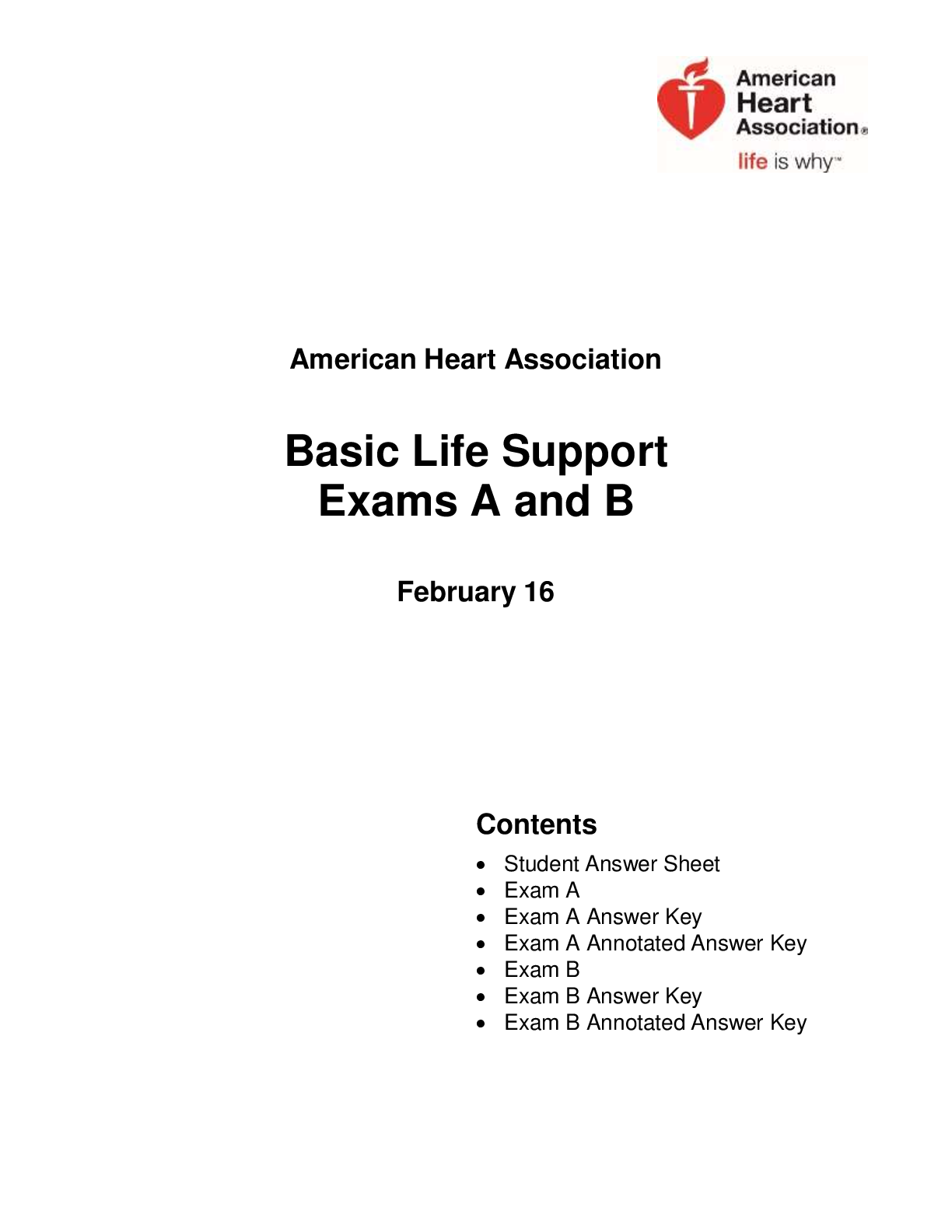


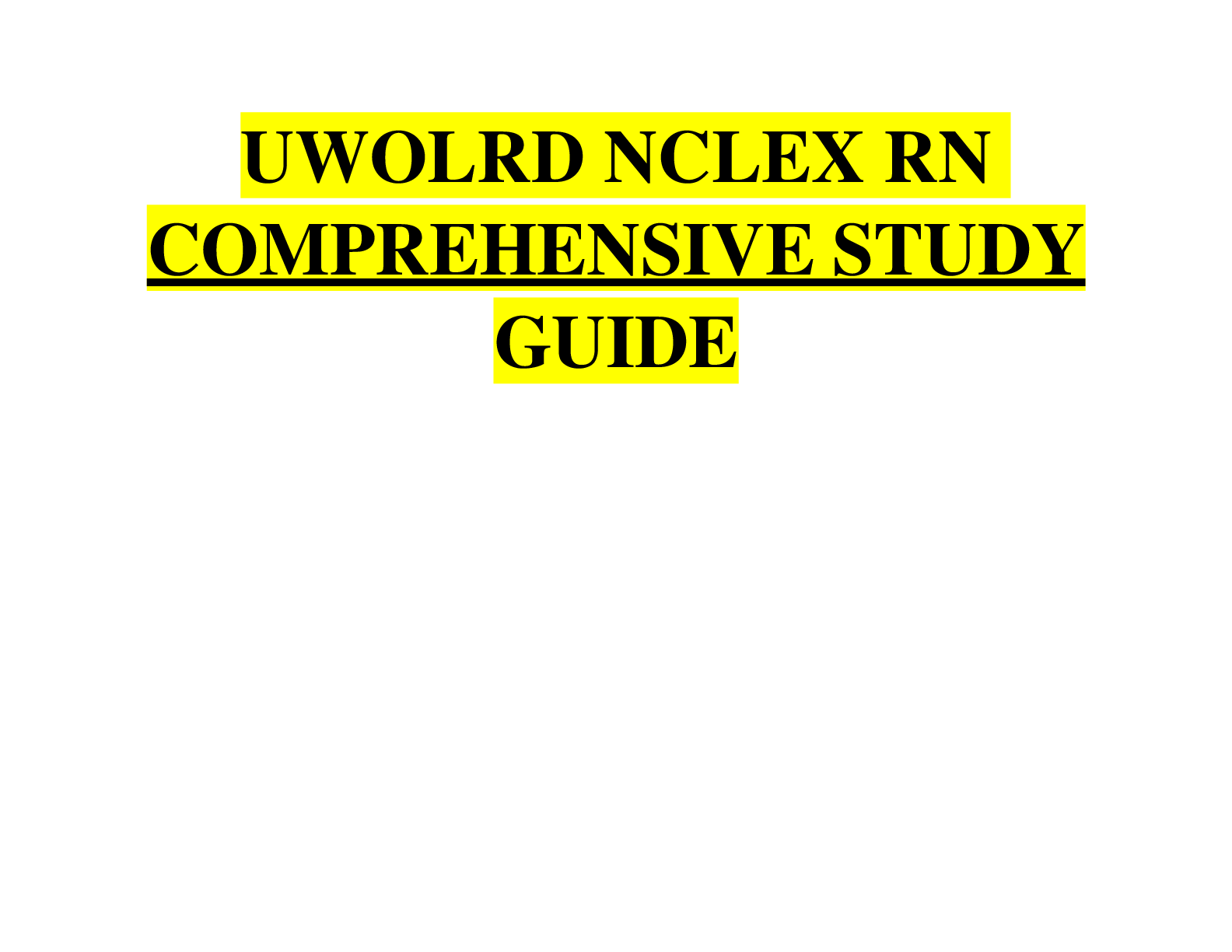
.png)

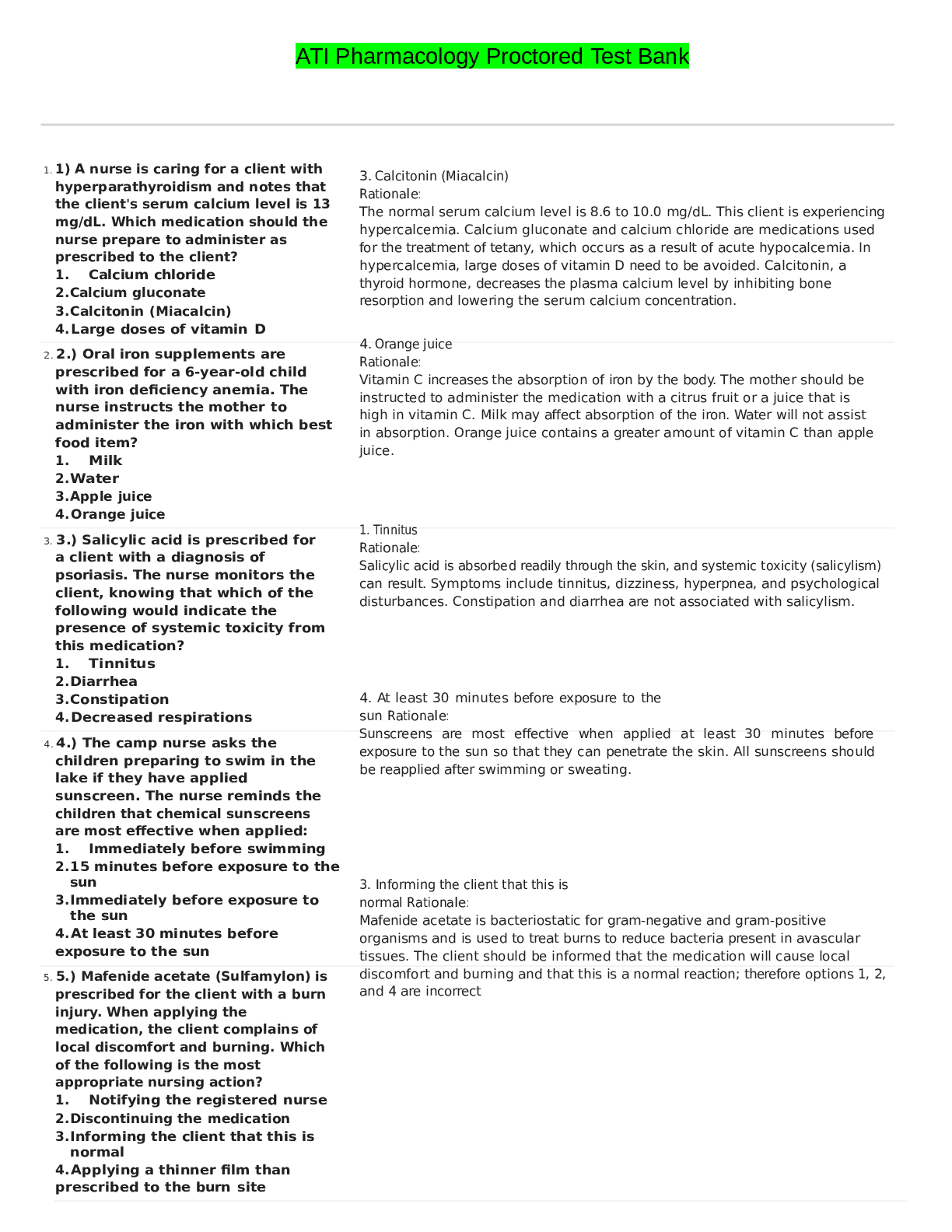
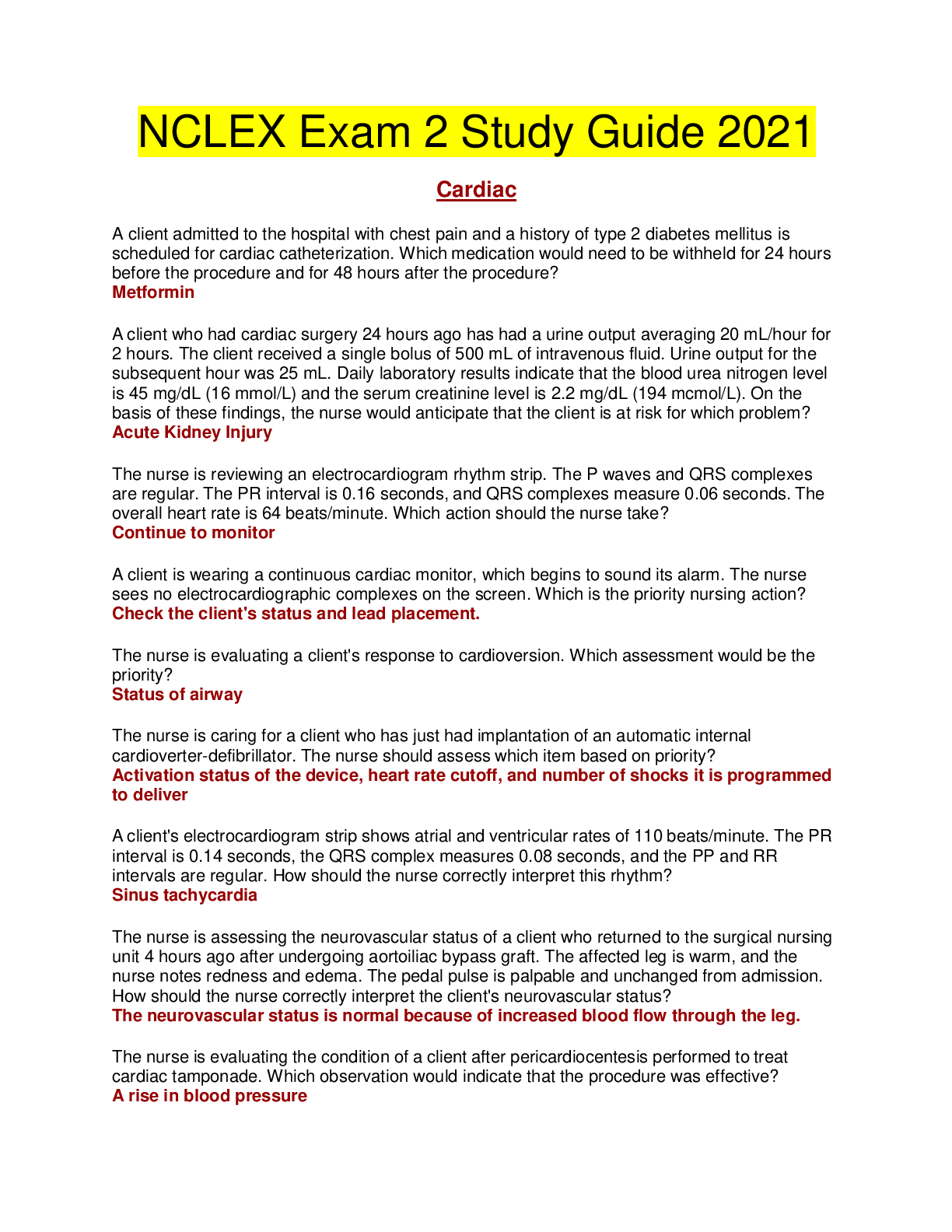



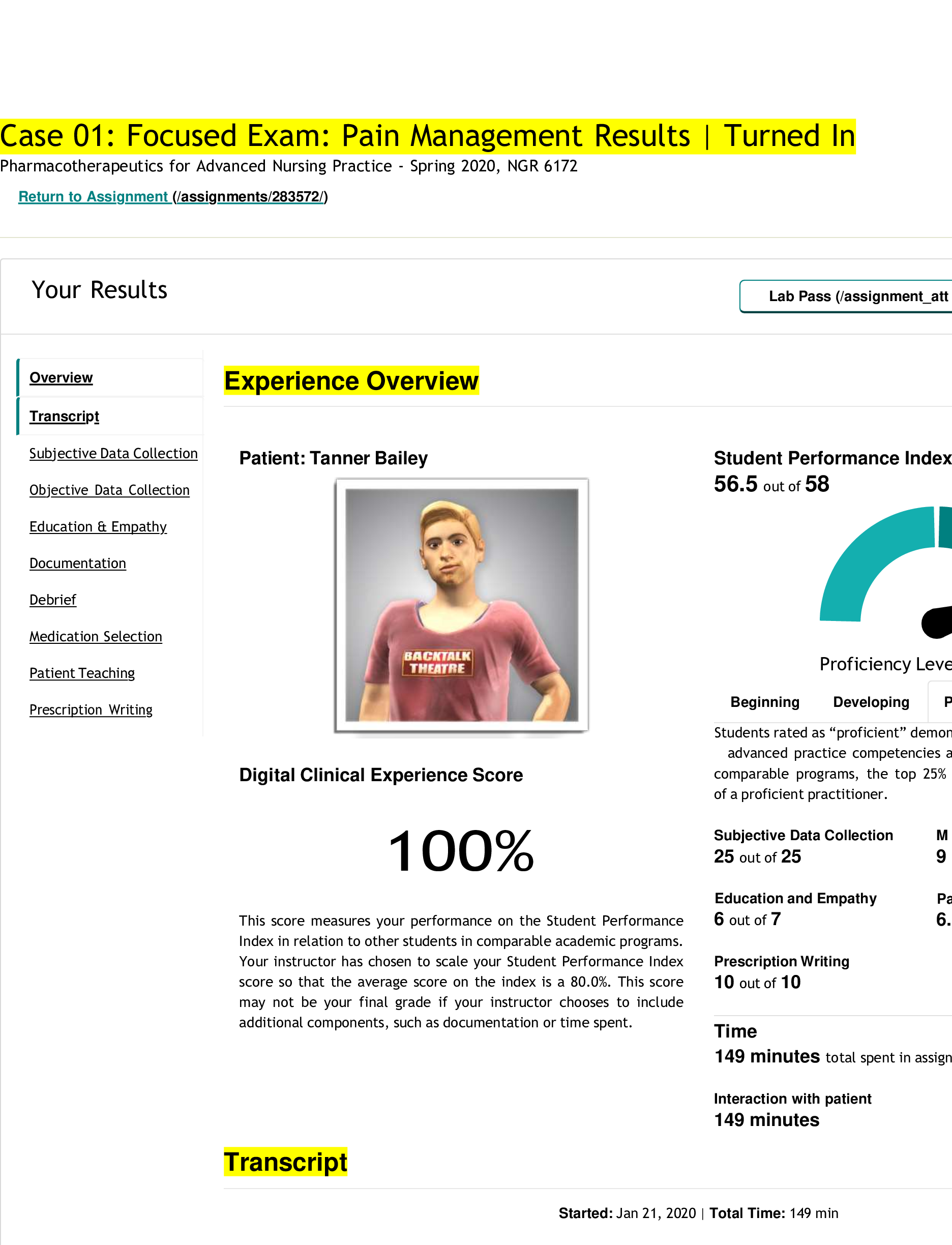
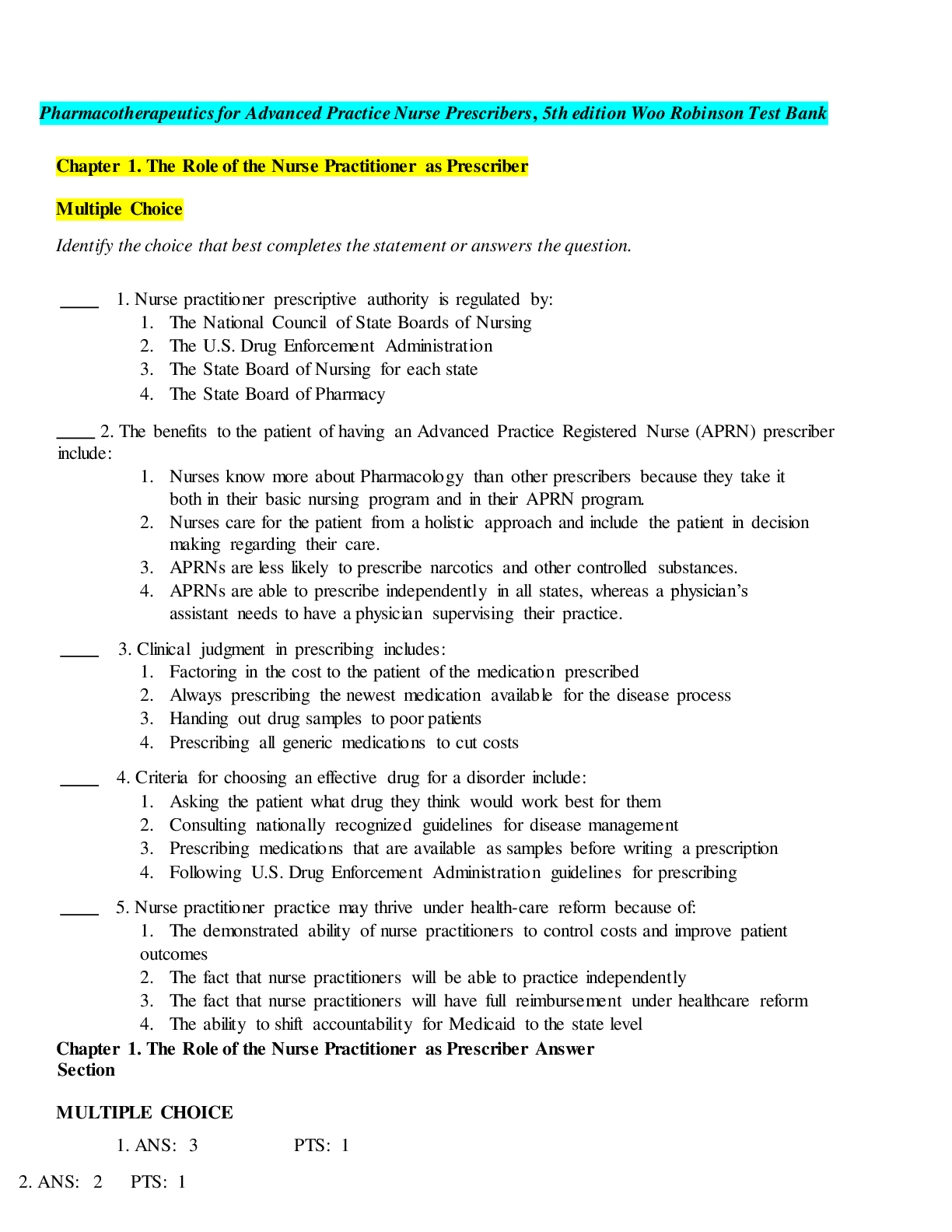
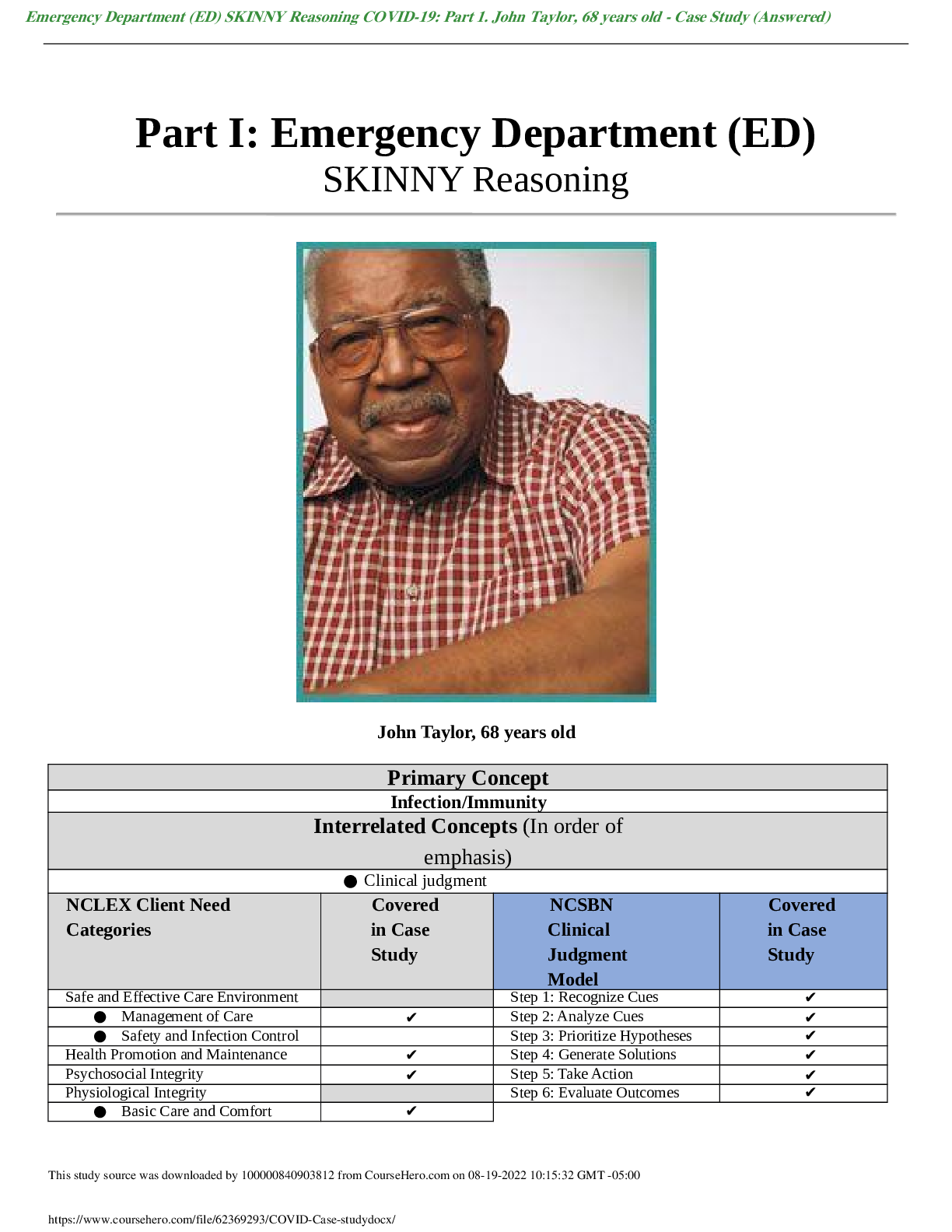
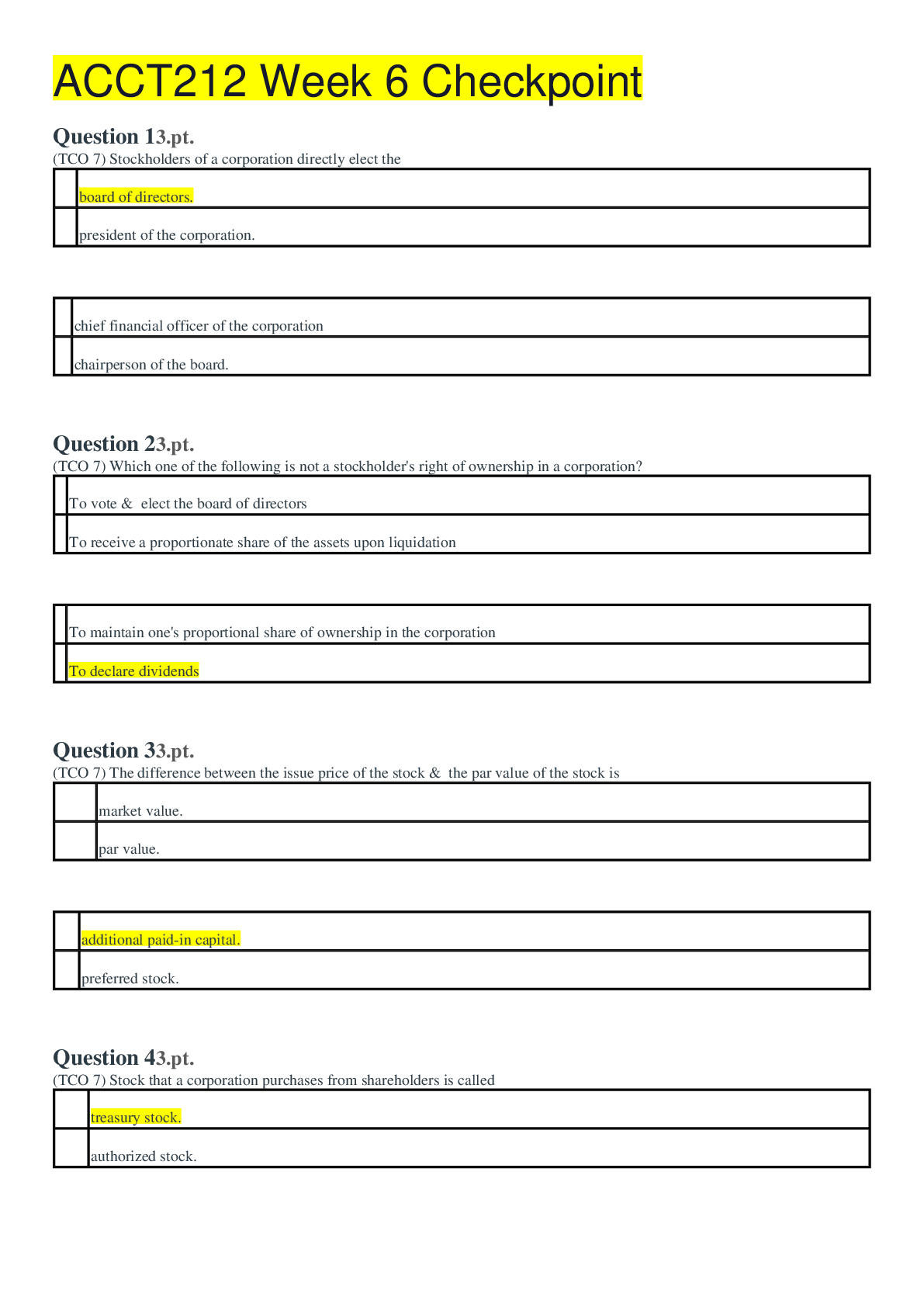
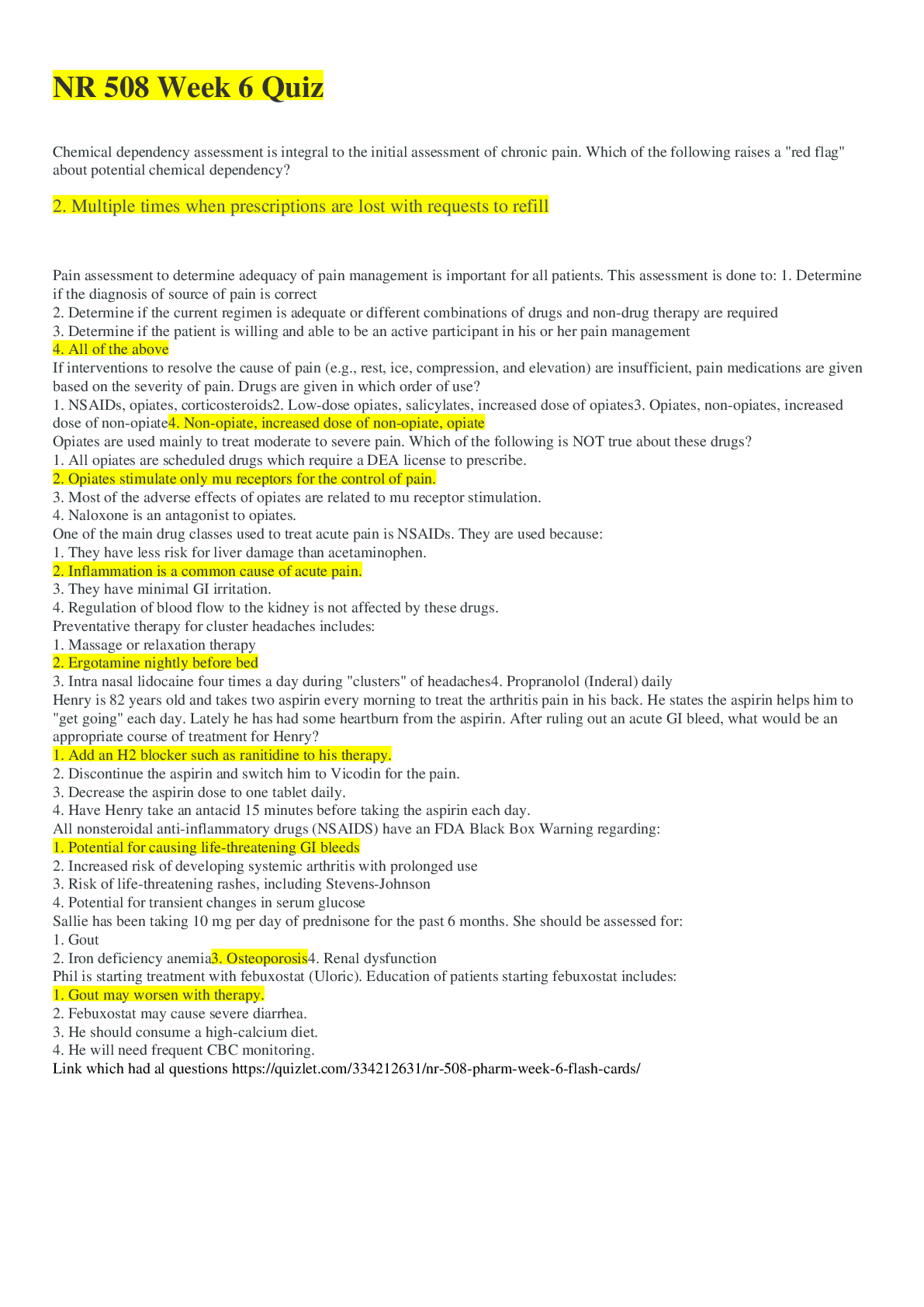
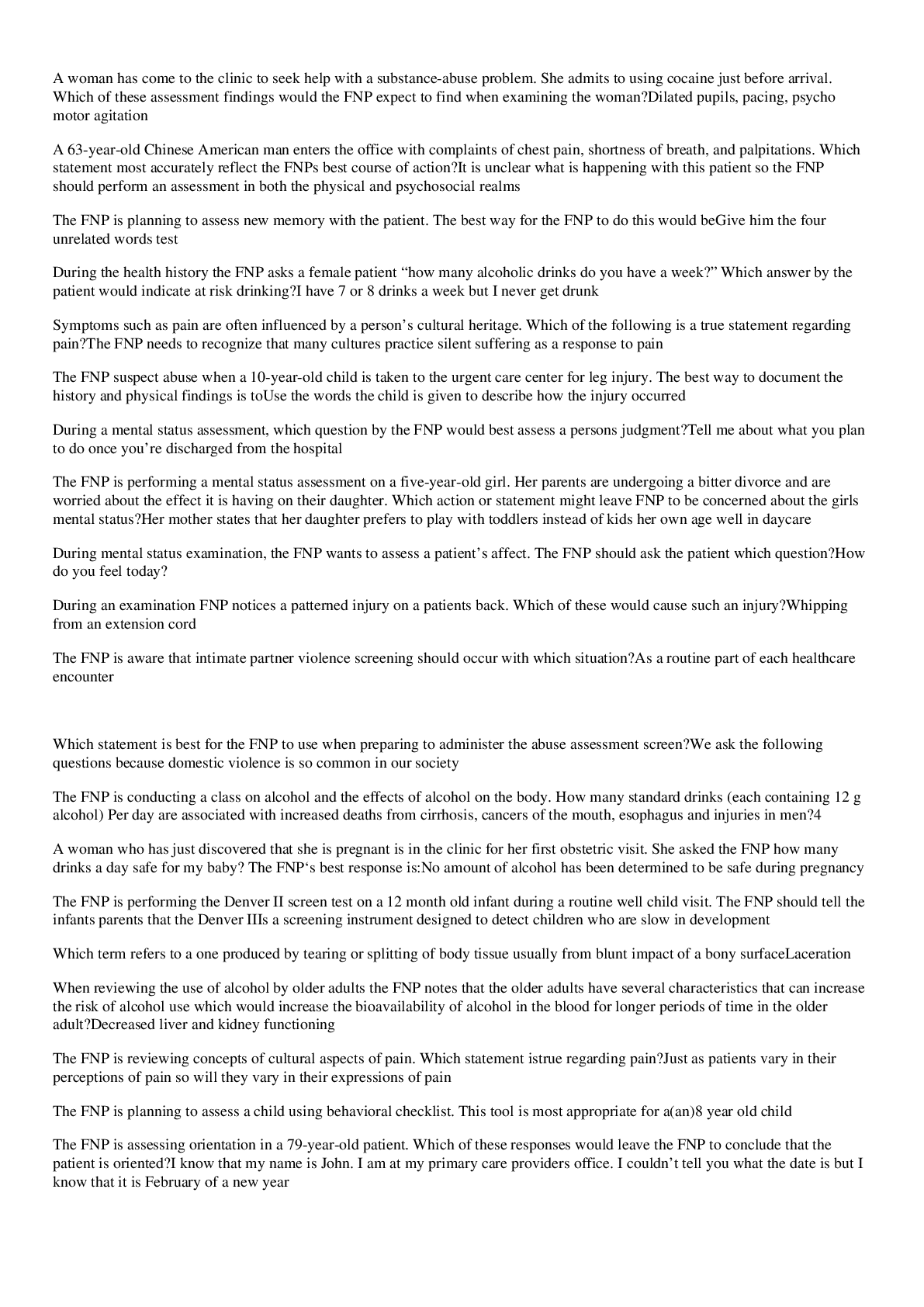
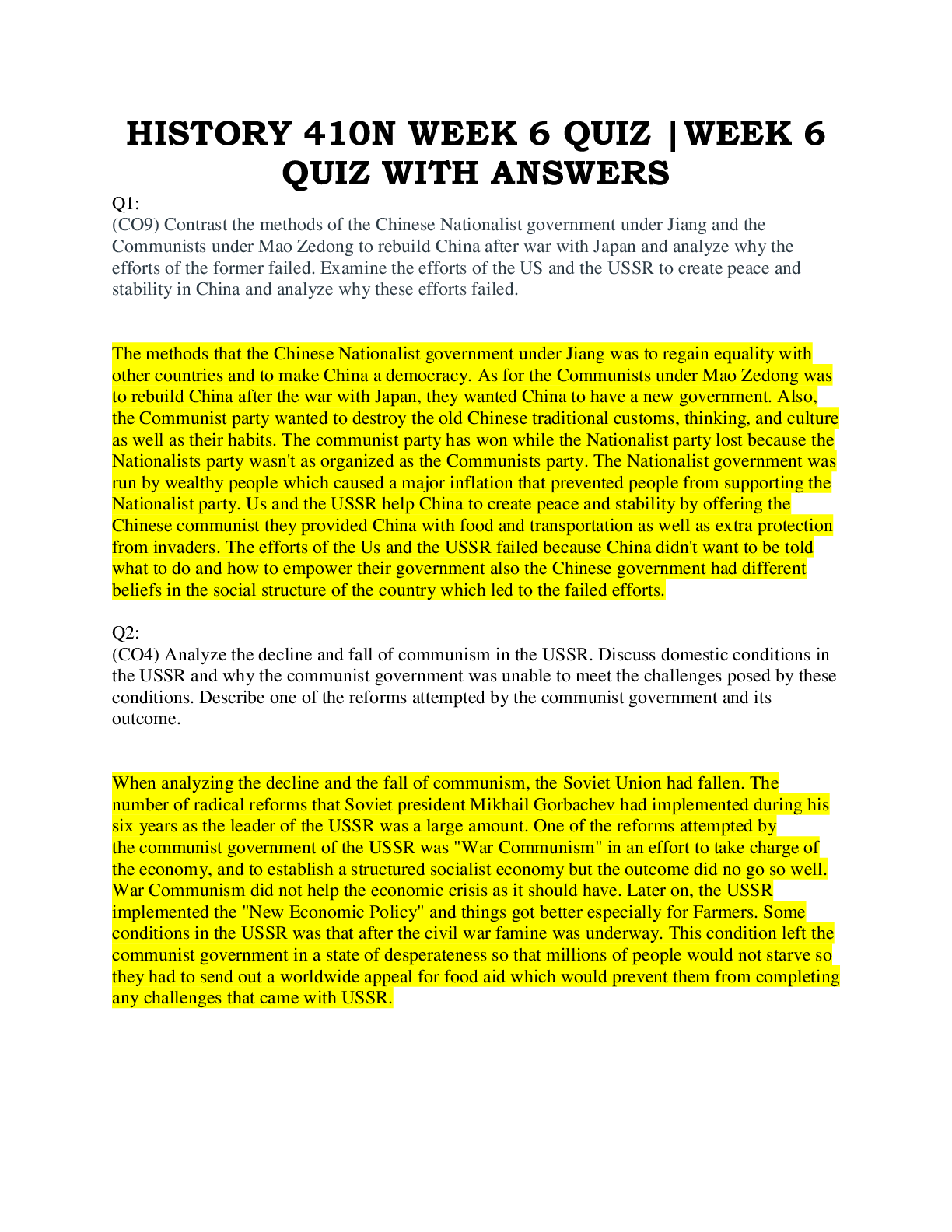
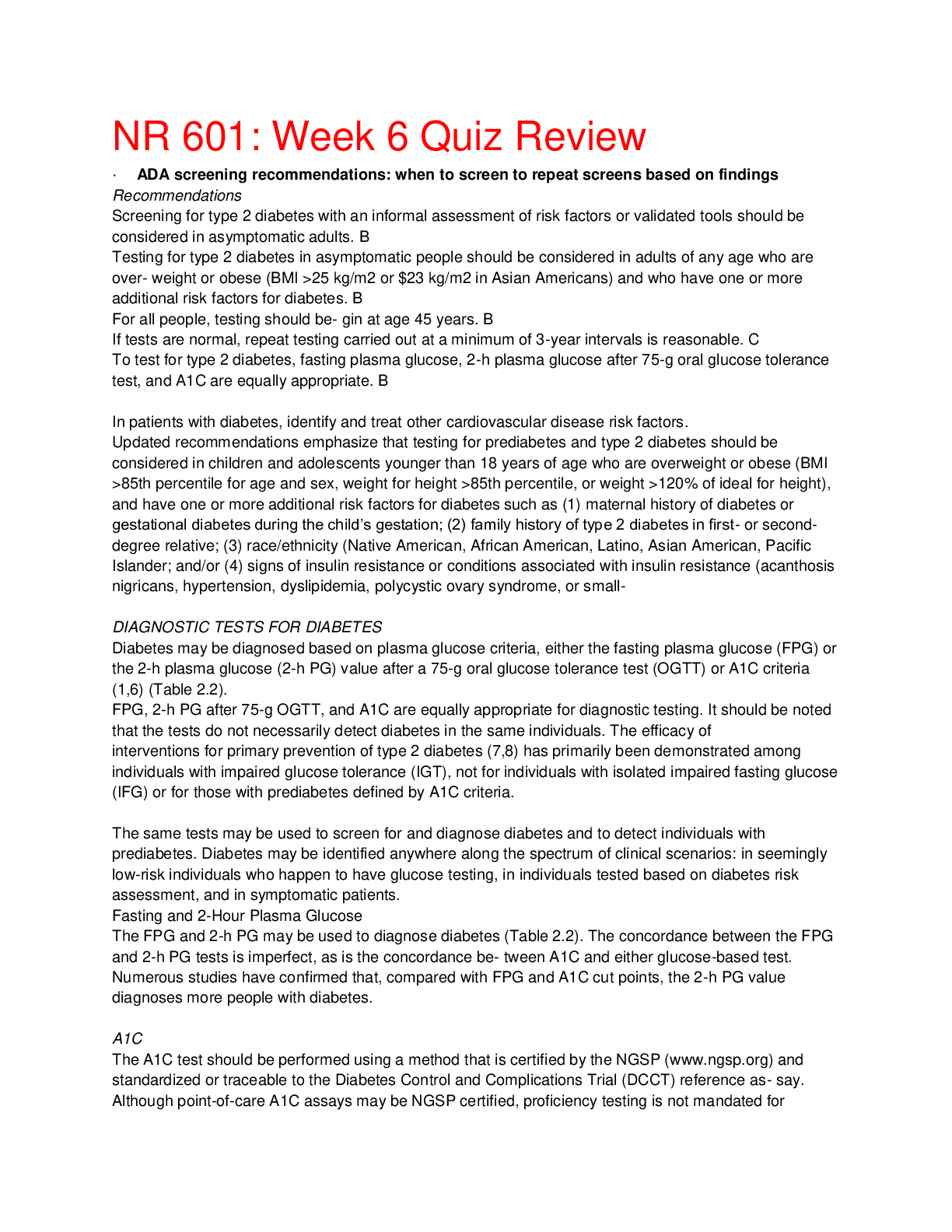
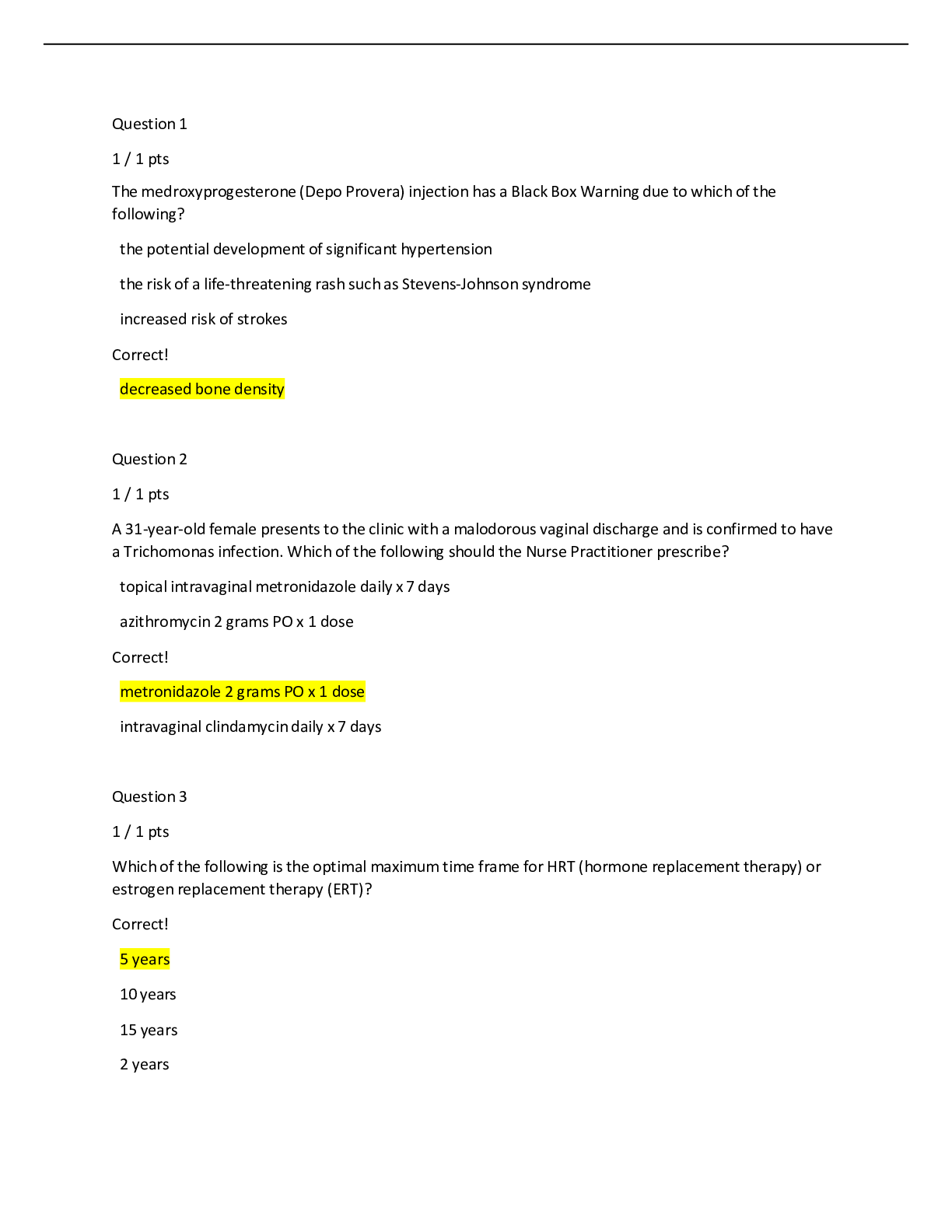
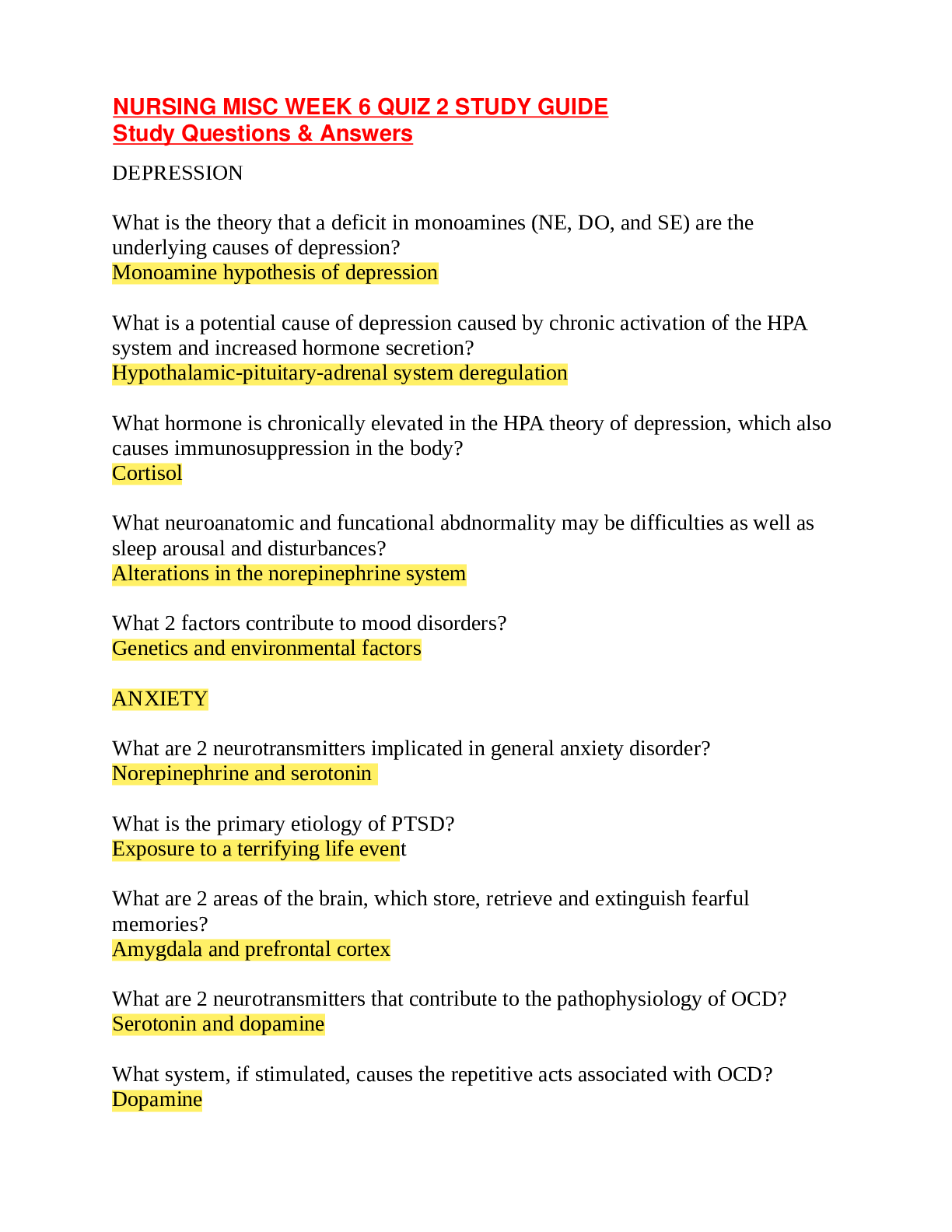
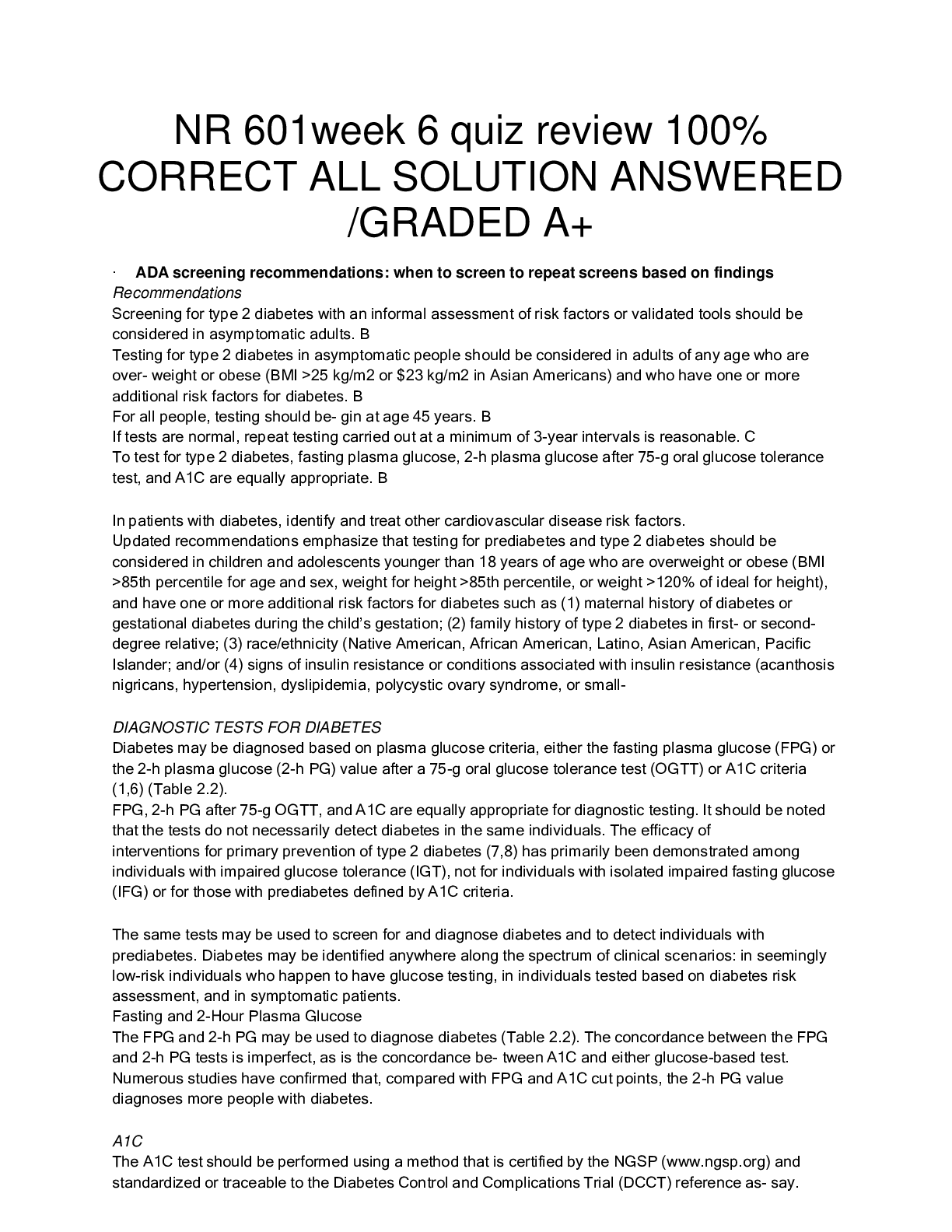
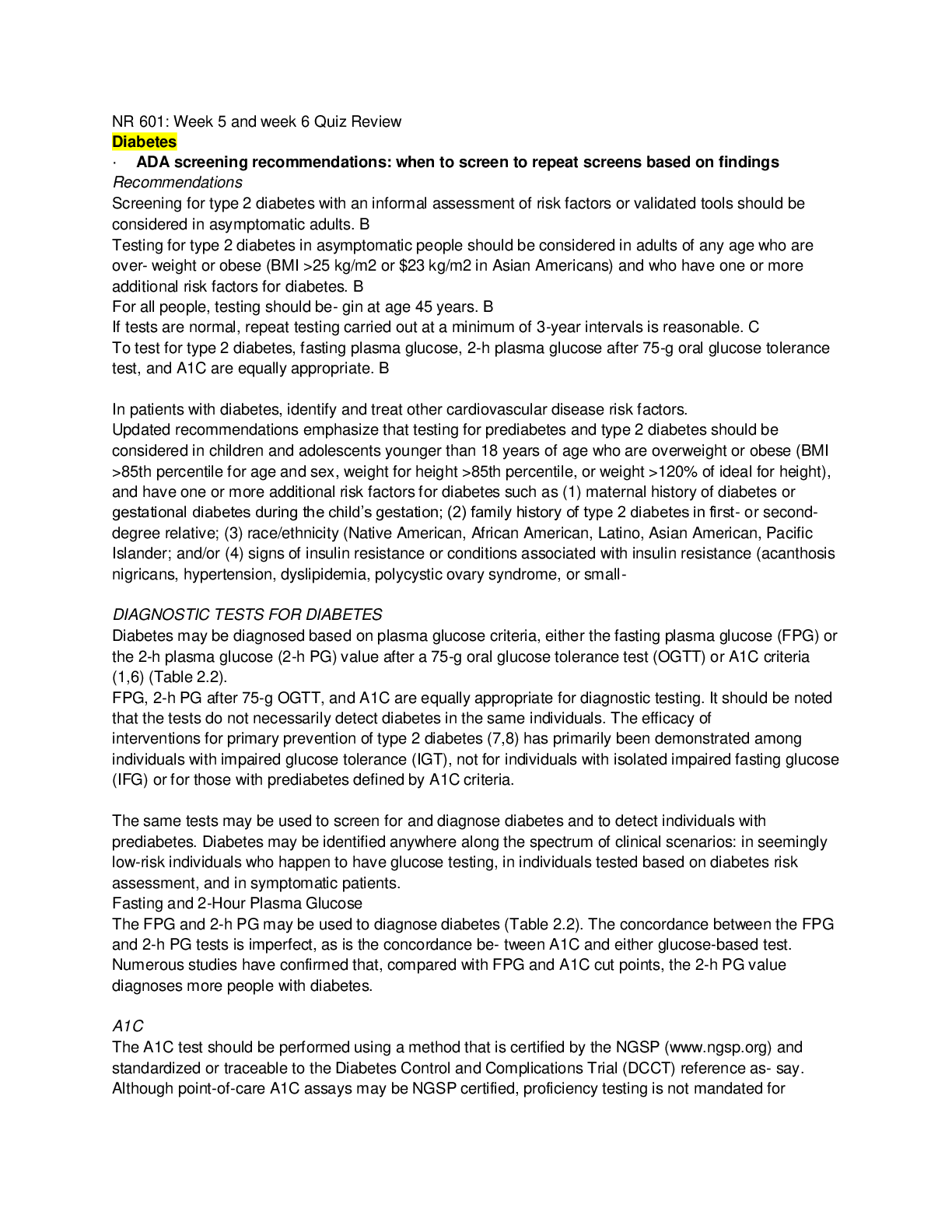
 all Correct and Graded A.png)
